HEX KB
Rules of the Game
by Mark Steere
INTRODUCTION
Hex KB is a two player game, played on the board shown in Figure 1. There are two red border segments, two blue border segments, and a "portal" (explained below) highlighted in green. The two players, designated Red and Blue, take turns claiming unoccupied cells on the board, one cell per turn, by adding stones of their own color to the board.
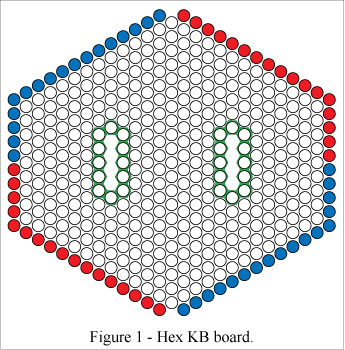
[Technical note (totally non-essential for learning the rules of the
game): The "KB" stands for Klein bottle, an unusual, four dimensional shape.
The Hex KB
board is a Klein bottle, or more precisely, a Klein bottle with a hole in it.
The hole perimeter is divided into four segments, alternating in color between red and
blue, and is stretched outward, flattening the Klein bottle and forming an outer perimeter.
The topology of Hex KB is
investigated in Hex KB Topology.]
Draws cannot occur in Hex KB. Mark Steere designed Hex KB in March 2009.
THE PORTAL
The two "portal frames" (highlighted in green) are considered to be coincident. So when you place a stone on a portal
frame cell, you must also place a stone on the corresponding cell in the
corresponding portal frame while it is still your turn. Although you have placed two stones during your turn, you have only claimed one cell since the two portal
frames and the cells within them are coincident.
In Figure 2 Red claimed the first cell of the game - a single cell represented by two red stones. Now it's Red's turn to claim another cell.
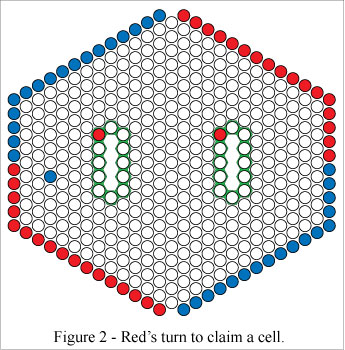
PATH TYPES
SIMPLE CONNECTING PATH
A path of like-colored stones that connects the two border segments of the stones' color, and which doesn't
pass through the
portal is a "simple connecting path". See Figure 3.
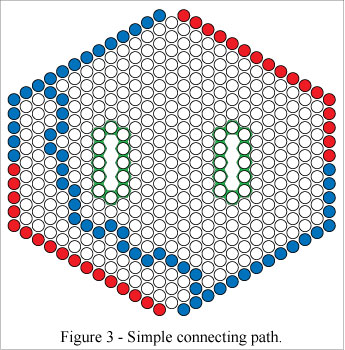
SINGLE TRANSIT CONNECTING PATH
A connecting path that passes through the portal once is called a "single
transit connecting path". See Figure 4.
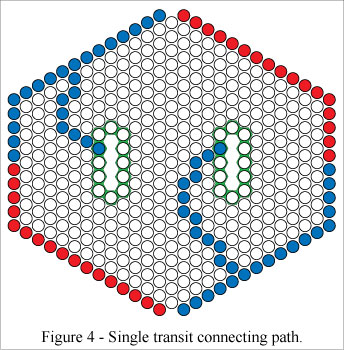
DOUBLE TRANSIT CONNECTING PATH
A connecting path that spirals through the portal twice is called a "double
transit connecting path". See Figure 5.
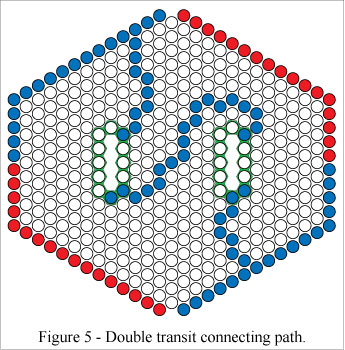
PORTAL LOOP
A loop of stones that passes through the portal is called a "portal loop". In Figure 6 a closed path (loop) of blue stones passes through the portal.
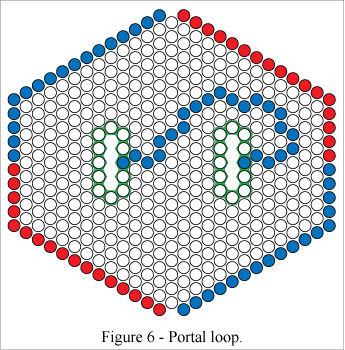
BORDER SEGMENT CELLS
Cells in a border segment can be used as part of a path of stones which are the same color as the border segment.
Figure 7 shows a red portal loop which includes red border segment cells.
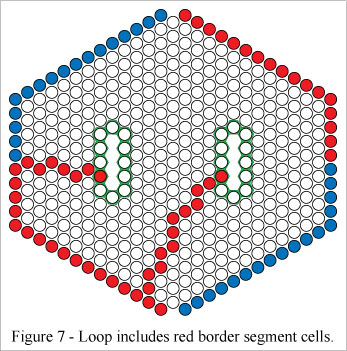
OBJECT OF THE GAME
To win, you must meet at least one of the following three criteria:
1. SIMPLE CONNECTING PATH
Red has won with a simple connecting path in Figures 8a and 8b, passing through the portal net zero times in both cases.
(The blue stones have been omitted for clarity.)
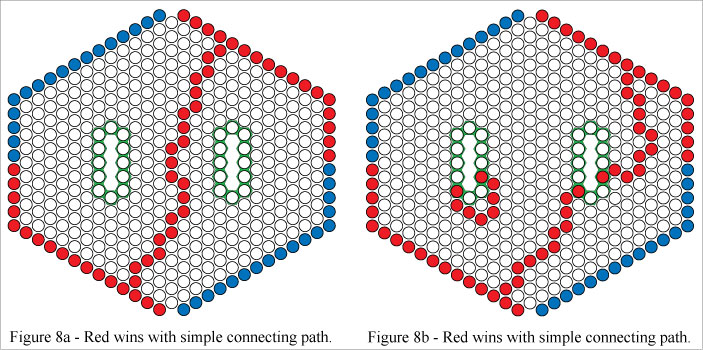
2. PORTAL LOOP AND SINGLE TRANSIT CONNECTING PATH (TWO PATHS TOTAL)
Red has won with a portal loop and a single transit connecting path (two distinct paths) in Figures 9a and 9b.
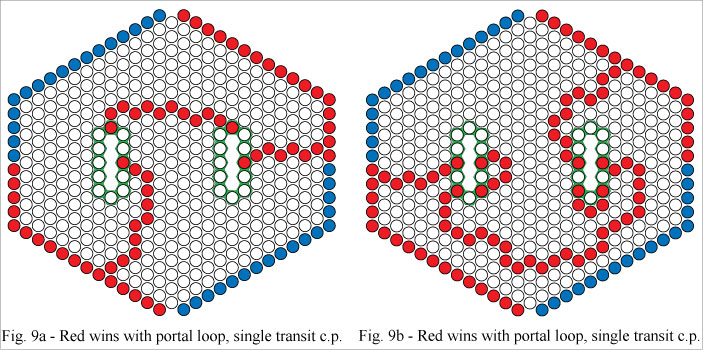
3. DOUBLE TRANSIT CONNECTING PATH
Red has won with a double transit connecting path in Figures 10a and 10b.
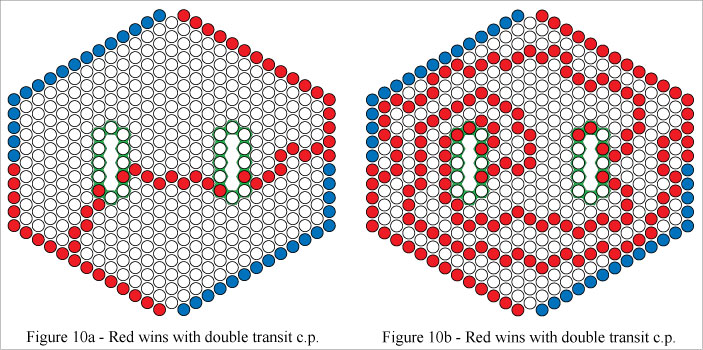
PUZZLE
Hex KB has an interesting geometric property. If the board is completely filled with red and blue stones
(in any proportion of red stones to blue stones), there will always be a winning solution in one color but never in
both colors simultaneously. See if you can determine the winning color in Puzzle A.
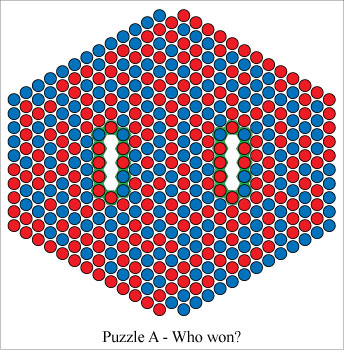
SOLUTION
AUTHOR'S NOTE
Feel free to publish this rule sheet, and to program the
game of Hex KB for online or offline play. No licensing fee or royalties are
expected. However please donít change the name or the rules, and please
attribute the game to me, Mark Steere. My other games can be found at
marksteeregames.com.
Copyright (c) March 2009 by Mark Steere










